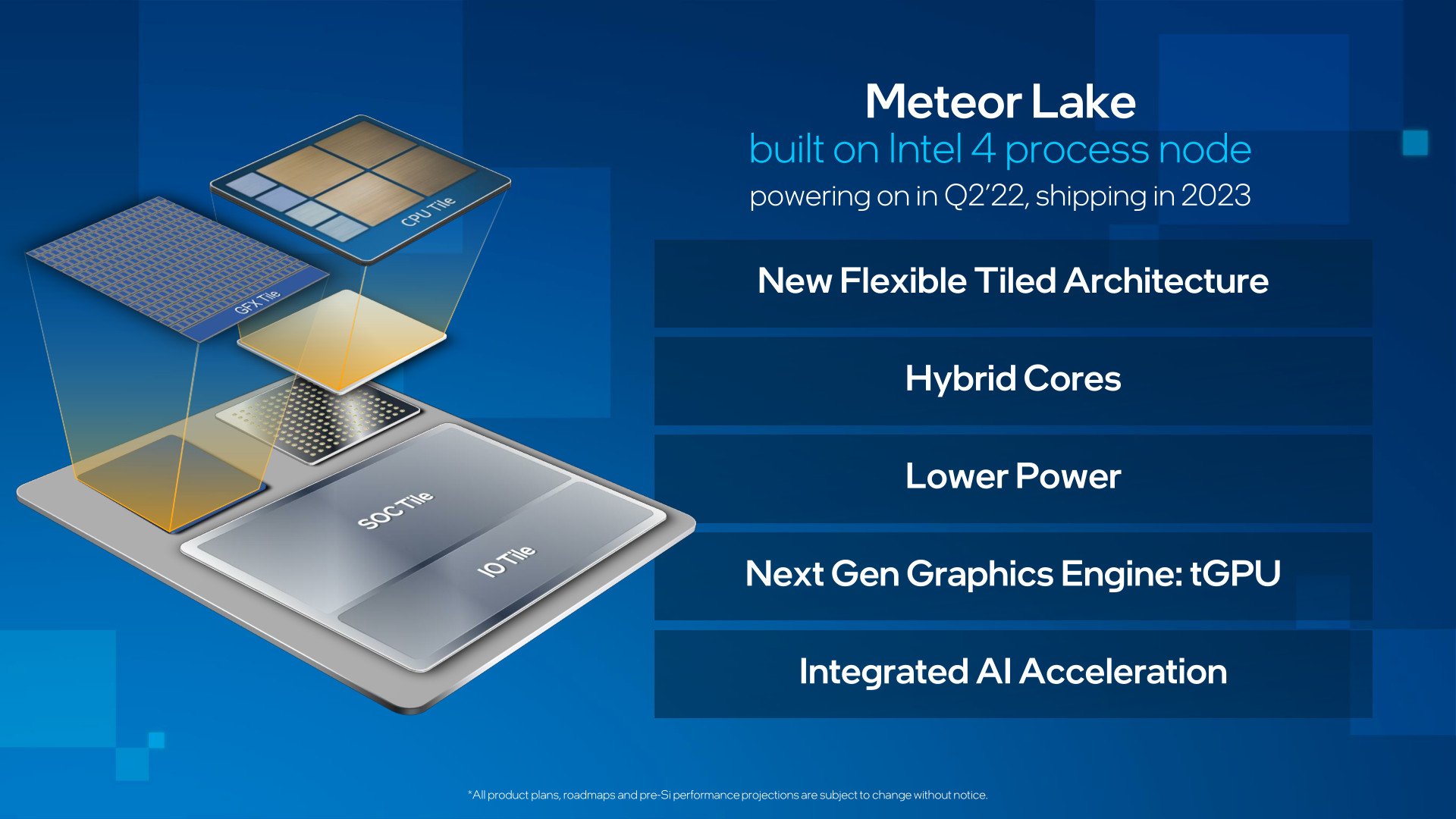Intel borrows a page from Apple's playbook for its upcoming Meteor Lake processor
Intel flaunted a Meteor Lake processor with on-package memory.

What you need to know
- Intel recently showcased a Meteor Lake processor on-memory LPDDR5X package.
- On-package memory promises enhanced performance, a reduced footprint for the system, and more.
- The approach requires a sophisticated cooling system that will be able to cool the CPU and memory at the same time.
Intel recently showcased its roadmap, highlighting its packaging solutions for some of its existing products and upcoming projects, including Granite Rapids, Sierra Forest, and Ponte Vecchio. But the show's star was its Meteor Lake processor, shipping with on-package LPDDR5X memory under the hood, as spotted by Tom's Hardware.
The entry, a quad-tile Meteor Lake CPU, uses Foveros packaging for its tiles and ships with 16GB LPDDR5X-7500 memory from Samsung. By integrating LPDDR5X memory into the Meteor Lake processor, Intel could deliver a bandwidth of up to 120 GB/s.
This idea isn't entirely new. Apple expanded the memory capacity on its M1 and M2 packages with methods quite similar to the approach Intel plans to take with on-package memory.
Integrating the on-package with the CPU promises several advantages, including enhanced performance, a thin system, and a reduced footprint for the system, which facilitates the incorporation of a larger capacity battery.
However, this approach does come with its fair share of setbacks. For instance, the whole system will be impacted if there's an issue with the memory chip. It will also call for an advanced cooling system since it will require much more power to cool down the CPU and the memory simultaneously.
We've seen Intel use package-on-package DRAM with Atom-branded CPUs for tablets and ultra-thin laptops successfully in the past. It will be interesting to see the route Intel will take with on-package memory and whether laptop manufacturers will embrace it.
On-package memory improves the manufacturing process significantly, not to mention how easy it'll be for manufacturers to develop sleeker and thinner notebooks. But on the flip side, it also has implications limiting configurations.
All the latest news, reviews, and guides for Windows and Xbox diehards.

Kevin Okemwa is a seasoned tech journalist based in Nairobi, Kenya with lots of experience covering the latest trends and developments in the industry at Windows Central. With a passion for innovation and a keen eye for detail, he has written for leading publications such as OnMSFT, MakeUseOf, and Windows Report, providing insightful analysis and breaking news on everything revolving around the Microsoft ecosystem. While AFK and not busy following the ever-emerging trends in tech, you can find him exploring the world or listening to music.
